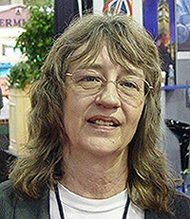“I find the ideas in the fractals, both as a body of knowledge and as a metaphor, an incredibly important way of looking at the world.” Vice President Al Gore, New York Times, June 21, 2000.
I believe the universe is a holographic fractal. We are holographic because everything in the universe is made from the same building blocks/love/energy/substance. Creating my art is like a spiritual garden where I grow rainbows of colors. It is my meditation, along with yoga, and a way for me to achieve inner and outer harmony as I journey on the spiral path of life.
Fractal geometry reveals a new way of looking at the universe, a hidden order underlying what seem to be chaotic events, through beautiful self similar repeating patterns that have an endless variation of forms throughout scale changes. They have a hidden order and provide order from out of chaos. The point where chaos and order meet each other is the point where the edge of the form meets its surroundings. There are four types of chaos attractors, which balance chaos and bring order from it: the point attractor, cycle attractor, torus attractor and the strange attractor.
Fractals are the geometry of nature and natural forms. Trees, cauliflower, sunflowers, ferns, coastal shorelines and the human artery system are examples of self repeating fractals that are self similar when you change the scale. For example, a tree branch has the same basic structure as the whole tree, including the root structure and one tree is self similar to another tree. We humans are uniquely similar to each other.
The mathematical formulas are rendered on a computer to make the fractal images and can contain over 300,000 points which need to be run through the fractal formula as much as 1000 times. Large, complex fractals can take days to be completed on the computer.Gaston Julia and Pierre Fatou developed the original mathematical theories in 1918, independent of each other and Benoit Mandelbrot is credited with the modern development of fractal geometry in 1980, with the help of computers. He has also applied fractal geometry to economics. The famous “Mandelbrot Set” is named after him and the “Julia Set” after Gaston Julia.
Sunday, August 1, 2010
Subscribe to:
Post Comments (Atom)

No comments:
Post a Comment